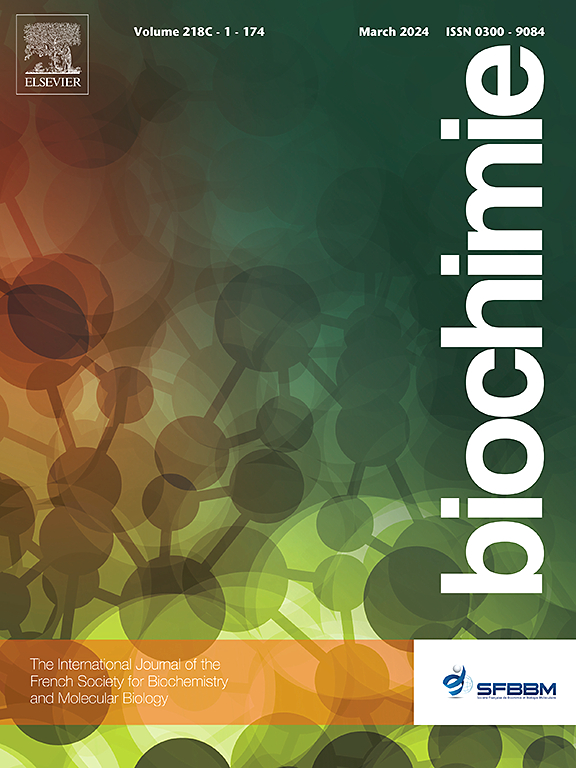The X Factor: Regional differences in the level of ontogenetic variations in procoagulant venom activity in the Northwestern Neotropical Rattlesnake (Crotalus culminatus)
IF 3
3区 生物学
Q2 BIOCHEMISTRY & MOLECULAR BIOLOGY
引用次数: 0
Abstract
Rattlesnakes are among the most widespread and medically significant venomous snakes in the Americas. Mexico boasts the highest diversity of these snakes, making it an ideal setting for research on the biology and medical implications of rattlesnake venom. The Northwestern Neotropical rattlesnake (Crotalus culminatus), endemic to Mexico, has been previously shown to exhibit an ontogenetic loss of strong Factor X activation procoagulant activity. This pathophysiological activity was poorly neutralized by antivenom but was abolished by a metalloproteinase inhibitor. This toxicological study expands on initial findings to assess ontogenetic venom variation across a broader geographic scale, while also testing the efficacy of three antivenoms and three metalloproteinase inhibitors against C. culminatus coagulotoxicity. Our results reveal a potential geographic influence on ontogenetic loss of FX activation-based procoagulant toxicity, which appears more marked in the state of Morelos than in Guerrero and Michoacán (all within Mexico). Possible evolutionary and ecological explanations for this are discussed. Furthermore, none of the tested antivenoms were able to neutralize procoagulant venom activity. In contrast, the metalloproteinase inhibitors marimastat and prinomastat were effective. However, the metalloproteinase inhibitor DMPS (2,3-Dimercapto-1-propanesulfonic acid) was ineffective even at a 5X higher molarity concentration than prinomastat and marimastat. The results of this study have implications across clinical medicine, toxicology, and evolutionary biology. They highlight the need for improvements in antivenom manufacturing while also providing data supporting the utility of enzyme inhibitors as therapeutic options. The data also lays the foundation for exploring the selection pressures leading to this novel rattlesnake venom phenotype.

X因素:西北新热带响尾蛇(Crotalus atus)促凝毒液活性的个体发生变异水平的区域差异。
响尾蛇是美洲分布最广、医学上最重要的毒蛇之一。墨西哥以这些蛇的最高多样性而自豪,使其成为研究响尾蛇毒液的生物学和医学意义的理想场所。西北新热带响尾蛇(Crotalus顶点)是墨西哥特有的,先前已被证明具有强因子X激活促凝活性的个体发生丧失。这种病理生理活性被抗蛇毒血清很差地中和,但被金属蛋白酶抑制剂所消除。这项毒理学研究扩展了最初的研究结果,以评估更广泛地理范围内的个体发生毒液变异,同时还测试了三种抗蛇毒血清和三种金属蛋白酶抑制剂对顶点弓形虫凝血毒性的功效。我们的研究结果揭示了基于FX激活的促凝剂毒性的个体发生损失的潜在地理影响,这在莫雷洛斯州比在格雷罗州和Michoacán(均在墨西哥境内)更为明显。本文讨论了可能的进化论和生态学解释。此外,没有一种测试的抗蛇毒血清能够中和促凝毒液活性。相反,金属蛋白酶抑制剂marimastat和priomastat是有效的。然而,金属蛋白酶抑制剂DMPS(2,3-二巯基-1-丙磺酸)在与其他两种抑制剂相同的摩尔浓度下无效。这项研究的结果对临床医学、毒理学和进化生物学都有影响。他们强调了改进抗蛇毒血清制造的必要性,同时也提供了支持酶抑制剂作为治疗选择的数据。这些数据也为探索导致这种新型响尾蛇毒液表型的选择压力奠定了基础。
本文章由计算机程序翻译,如有差异,请以英文原文为准。
求助全文
约1分钟内获得全文
求助全文
来源期刊

Biochimie
生物-生化与分子生物学
CiteScore
7.20
自引率
2.60%
发文量
219
审稿时长
40 days
期刊介绍:
Biochimie publishes original research articles, short communications, review articles, graphical reviews, mini-reviews, and hypotheses in the broad areas of biology, including biochemistry, enzymology, molecular and cell biology, metabolic regulation, genetics, immunology, microbiology, structural biology, genomics, proteomics, and molecular mechanisms of disease. Biochimie publishes exclusively in English.
Articles are subject to peer review, and must satisfy the requirements of originality, high scientific integrity and general interest to a broad range of readers. Submissions that are judged to be of sound scientific and technical quality but do not fully satisfy the requirements for publication in Biochimie may benefit from a transfer service to a more suitable journal within the same subject area.
 求助内容:
求助内容: 应助结果提醒方式:
应助结果提醒方式:


